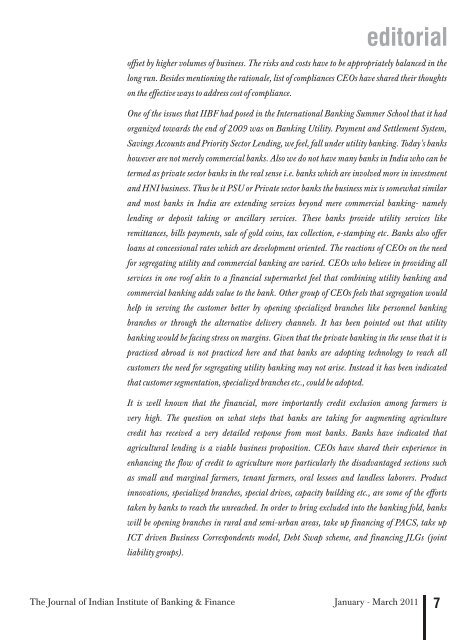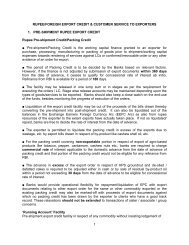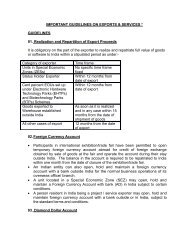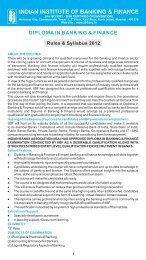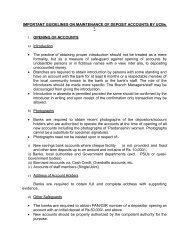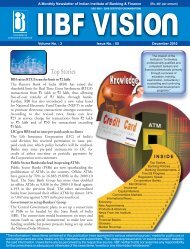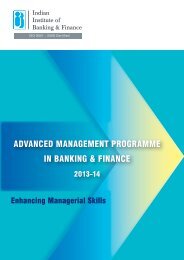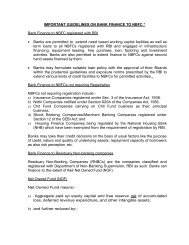Keb[ / DebkeÀ / pevekejer - cee®e& /
special feature - Indian Institute of Banking & Finance
special feature - Indian Institute of Banking & Finance
- No tags were found...
You also want an ePaper? Increase the reach of your titles
YUMPU automatically turns print PDFs into web optimized ePapers that Google loves.
editorialoffset by higher volumes of business. The risks and costs have to be appropriately balanced in thelong run. Besides mentioning the rationale, list of compliances CEOs have shared their thoughtson the effective ways to address cost of compliance.One of the issues that IIBF had posed in the International Banking Summer School that it hadorganized towards the end of 2009 was on Banking Utility. Payment and Settlement System,Savings Accounts and Priority Sector Lending, we feel, fall under utility banking. Today's bankshowever are not merely commercial banks. Also we do not have many banks in India who can betermed as private sector banks in the real sense i.e. banks which are involved more in investmentand HNI business. Thus be it PSU or Private sector banks the business mix is somewhat similarand most banks in India are extending services beyond mere commercial banking- namelylending or deposit taking or ancillary services. These banks provide utility services likeremittances, bills payments, sale of gold coins, tax collection, e-stamping etc. Banks also offerloans at concessional rates which are development oriented. The reactions of CEOs on the needfor segregating utility and commercial banking are varied. CEOs who believe in providing allservices in one roof akin to a financial supermarket feel that combining utility banking andcommercial banking adds value to the bank. Other group of CEOs feels that segregation wouldhelp in serving the customer better by opening specialized branches like personnel bankingbranches or through the alternative delivery channels. It has been pointed out that utilitybanking would be facing stress on margins. Given that the private banking in the sense that it ispracticed abroad is not practiced here and that banks are adopting technology to reach allcustomers the need for segregating utility banking may not arise. Instead it has been indicatedthat customer segmentation, specialized branches etc., could be adopted.It is well known that the financial, more importantly credit exclusion among farmers isvery high. The question on what steps that banks are taking for augmenting agriculturecredit has received a very detailed response from most banks. Banks have indicated thatagricultural lending is a viable business proposition. CEOs have shared their experience inenhancing the flow of credit to agriculture more particularly the disadvantaged sections suchas small and marginal farmers, tenant farmers, oral lessees and landless laborers. Productinnovations, specialized branches, special drives, capacity building etc., are some of the effortstaken by banks to reach the unreached. In order to bring excluded into the banking fold, bankswill be opening branches in rural and semi-urban areas, take up financing of PACS, take upICT driven Business Correspondents model, Debt Swap scheme, and financing JLGs (jointliability groups).The Journal of Indian Institute of Banking & Finance January - March 2011 7


